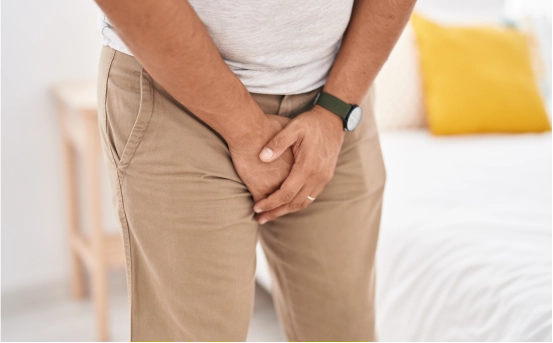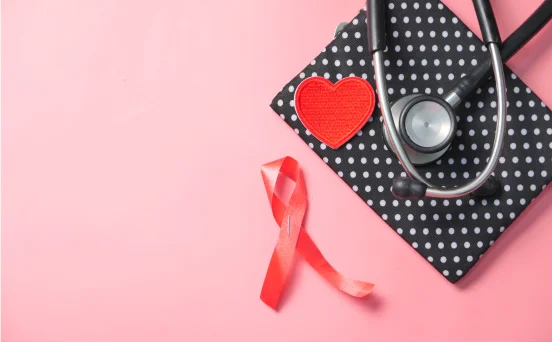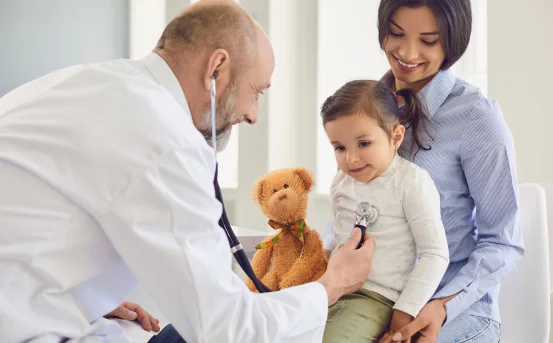Testicular cancer is one of the most treatable forms of cancer, especially when diagnosed early. Although it is relatively rare compared to other cancers, it is the most common cancer in young men aged 15 to 35. Early detection plays a crucial role in successful treatment outcomes. However, due to the sensitive nature of the subject, many men overlook the symptoms or hesitate to seek medical advice.
Unfortunately, many men hesitate to talk about issues related to their reproductive organs due to embarrassment, stigma, or lack of awareness. This often results in delayed diagnosis, which can reduce the chances of full recovery. Unlike some other forms of cancer that develop silently, testicular cancer usually presents noticeable symptoms early on. However, these symptoms are frequently ignored or mistaken for minor injuries or infections.
What Is Testicular Cancer?
Testicular cancer develops in the testicles (or testes), which are part of the male reproductive system. The testicles are located in the scrotum, a loose bag of skin beneath the penis. They are responsible for producing sperm and the male hormone testosterone. Most testicular cancers begin in the germ cells the cells responsible for producing sperm.
There are two main types of testicular germ cell tumors: seminomas and non seminomas. While both types are treatable, seminomas generally grow and spread more slowly than non seminomas.
Why Knowing the Symptoms Matters
Testicular cancer can progress silently, with subtle symptoms that are often mistaken for minor health issues or ignored altogether. Unlike other cancers that may spread without clear warning signs, testicular cancer often gives early, detectable clues. Recognizing these symptoms allows for prompt medical consultation, which is essential because testicular cancer can spread quickly if left untreated.
Common Symptoms of Testicular Cancer
- A Lump or Enlargement in Either Testicle :- One of the earliest and most common signs of testicular cancer is a lump or swelling in one of the testicles. The lump may be painless, firm, and can range in size from as small as a pea to much larger. In some cases, the affected testicle may become noticeably larger or feel heavier than usual. This change in size or texture is usually the first reason many men seek medical attention.
- A Feeling of Heaviness in the Scrotum :- Men with testicular cancer may notice a sensation of heaviness or dragging in the scrotum. This feeling may occur even without visible swelling or a lump. The sensation can persist for days or weeks and is often mistaken for strain due to physical activity.
- Dull Ache or Discomfort in the Lower Abdomen or Groin :- A persistent, dull ache in the lower abdomen, groin, or scrotum can also be a symptom of testicular cancer. This discomfort may not be severe or constant but should not be ignored, especially when combined with other symptoms like swelling or heaviness.
- Pain or Discomfort in a Testicle or the Scrotum :- While testicular cancer is often painless in its early stages, some men do report discomfort or pain in one testicle. The pain can be sharp or aching and may come and go. It’s essential not to dismiss even mild pain, as early medical intervention is key.
- Fluid Accumulation in the Scrotum :- Sudden accumulation of fluid in the scrotum, also known as a hydrocele, may occur in cases of testicular cancer. This fluid buildup can cause swelling and discomfort, and although it can also result from non-cancerous causes, it warrants medical evaluation.
- Breast Tenderness or Growth :- Hormonal changes triggered by testicular tumors can lead to unusual symptoms, such as tenderness or enlargement of breast tissue. This is medically known as gynecomastia. Although rare, such hormonal symptoms may indicate a type of tumor that produces certain hormones.
- Back Pain and Other Symptoms of Cancer Spread :- If the cancer has spread beyond the testicles, symptoms may include persistent back pain, chest pain, shortness of breath, or swelling in the legs. These signs suggest that cancer might have reached the lymph nodes or lungs. In advanced cases, weight loss and fatigue may also be present.
When to See a Doctor?
If you notice any of the above symptoms, especially a lump or swelling in the testicle, consult a healthcare professional immediately. It’s important not to panic many testicular lumps are not cancerous. However, only a doctor can perform the appropriate tests, such as a physical exam, ultrasound, and blood tests, to determine the cause.
Early-stage testicular cancer is highly curable, often requiring minimal treatment. Delaying consultation can reduce the effectiveness of treatment options and increase the risk of cancer spreading.
What to Expect During Diagnosis
Diagnosis typically begins with a physical examination. If a lump is detected, your doctor may recommend an ultrasound of the scrotum to assess its size and structure. Blood tests may be conducted to check for tumor markers such as alpha-fetoprotein (AFP), human chorionic gonadotropin (hCG), and lactate dehydrogenase (LDH). If cancer is suspected, the testicle may need to be surgically removed and examined under a microscope for a definitive diagnosis.
Who Is at Risk?
While any man can develop testicular cancer, certain risk factors increase the likelihood. These include
-
Undescended testicle (cryptorchidism) :- Men whose testicles didn’t descend normally at birth are at a higher risk.
-
Family history :- Having a father or brother with testicular cancer increases your chances.
-
Previous history :- If you’ve had testicular cancer before, your risk of developing it in the other testicle increases.
-
Age and race :- Most cases occur between ages 15–35, and white men are more likely to develop testicular cancer compared to men of other races.
Preventive Measures and Self Examination
There’s no guaranteed way to prevent testicular cancer, but performing monthly testicular self-exams can help detect abnormalities early. The best time to perform a self-exam is after a warm shower when the scrotal skin is relaxed. Gently roll each testicle between your fingers and thumbs, feeling for any lumps, changes in texture, or size.
Regular self-checks don’t replace professional medical evaluations but serve as a useful early warning system. If you find anything unusual, don’t delay seeking medical advice.
Conclusion
Testicular cancer may be a sensitive topic, but talking openly and learning about it can save lives. The condition is highly treatable, especially when caught early. Being aware of symptoms such as a lump, swelling, discomfort, or changes in testicle size can prompt early diagnosis and timely intervention.























